Table of Contents
Introduction:
Insulating rubber gloves and leather covers are the best combination when it comes to electrical safety. The security these two powerful players give electrical workers is unmatched. Exactly why are they the “perfect pair”? This blog post will go into more detail about why insulating rubber gloves and leather protection are exactly what you need for safety. We will talk about how they work together to strengthen electricity safety and provide extra benefits. Here are the secrets to this winning mix that will give you the confidence to do electrical work.
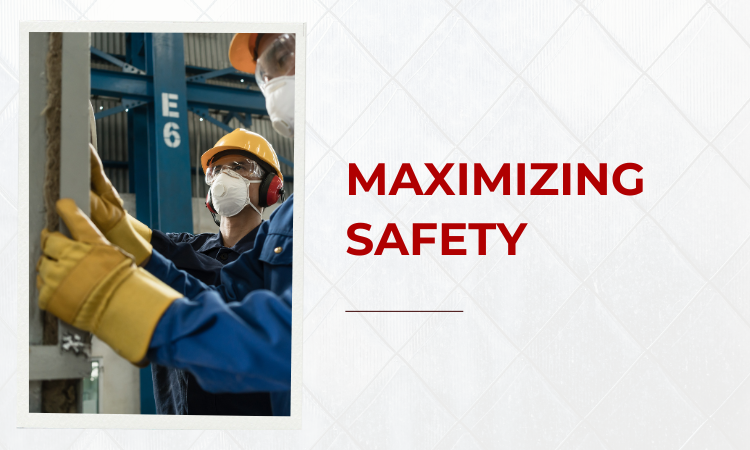
Maximizing Safety: Explore how leather protectors and insulating rubber gloves work together for optimal electrical safety:
When working with electricity, safety is very important. Rubber gloves that keep out electricity and leather protection are a powerful pair that electrical workers should always wear. However, how do these two seemingly separate pieces of gear work together to protect against electricity dangers?
Insulating rubber gloves are very important for keeping hands safe around electricity. They are made of non-conductive materials like latex or butyl rubber, which make a shield that stops electricity from getting to your hands. These gloves have been tested and rated for particular voltage uses to make sure they can handle a certain amount of electricity. On the other hand, rubber gloves have their limits. Because they are easily punctured, cut, or abraded, their insulating qualities can be lost.
This is where leather covers come into play. When worn over rubber gloves that keep your hands warm, leather covers add an extra layer of protection. Rubber gloves are protected from sharp items by thick leather. This keeps your skin from getting cuts, tears, or abrasions that could let electrical current flow through them. This not only makes your expensive warming rubber gloves last longer, but it also adds an important safety layer that lowers the risk of getting an electric shock even if the rubber breaks.
These two parts work together in a way that is greater than the sum of its parts. Because leather covers are made to fit snugly over insulating rubber gloves, they help keep the gloves’ shape and ability to conduct electricity. This is very important because any shape change in the rubber can affect how well it insulates. In addition, leather covers add an extra layer of defense against accidental arc flashes, making them useful in dangerous situations.
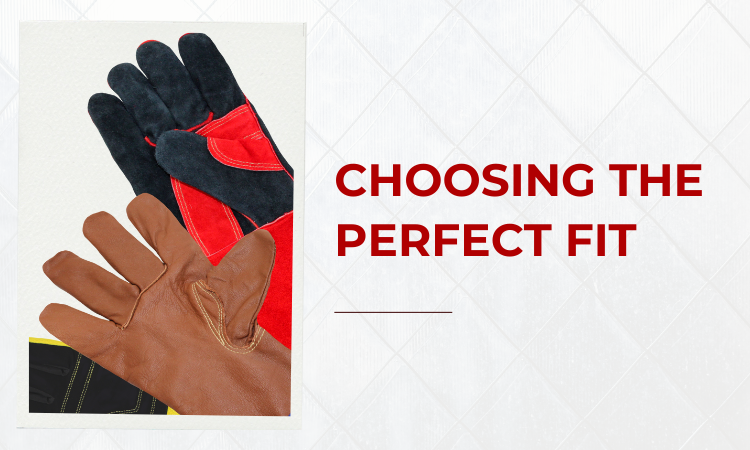
Matchmaker: Guide on choosing the perfect fit for your leather protectors and insulating rubber gloves:
Finding the right fit is important for electrical safety, just like Cinderella and her glass shoe. You are the fairy godmother in this case, and the perfect match is between your insulating rubber gloves and the right leather protection. If you want to make sure that everything goes smoothly with electricity, read on.
Size Does Matter: The rubber gloves that keep you warm and the leather protectors should both fit tightly but comfortably. If rubber gloves don’t fit right, they can bunch up or distort, which makes them less insulating. On the other hand, leather protectors that are too loose won’t protect well enough against cuts and scrapes, and they could even get caught on tools, which would be unsafe.
Get to Know Your Glove: Think about the size and type of your insulating rubber gloves when you choose leather protection. Choose leather protectors that are made to fit the class and voltage level of your gloves. This makes sure that the rubber fits right and keeps its insulating qualities.
Try Before You Buy: If you can, try on the leather protection over the rubber gloves you already have on. This lets you check your comfort and agility. You should be able to quickly move tools and equipment around while still feeling safe.
Take a look at Dexterity: Which leather cover you choose will depend on how dexterous you need to be to do your electrical work. Though thicker leather is safer, it may make it harder to move your hands. On the other hand, lighter leather is more flexible but not as protective. Pick the combination that works best for you.
Don’t Forget Comfort: Comfort is a very important part of safety. Leather guards that don’t fit right or are uncomfortable can make your hands tired, which can lead to bad use. Choose leather that is breathable and can wick away sweat, and make sure the seams won’t irritate your skin.
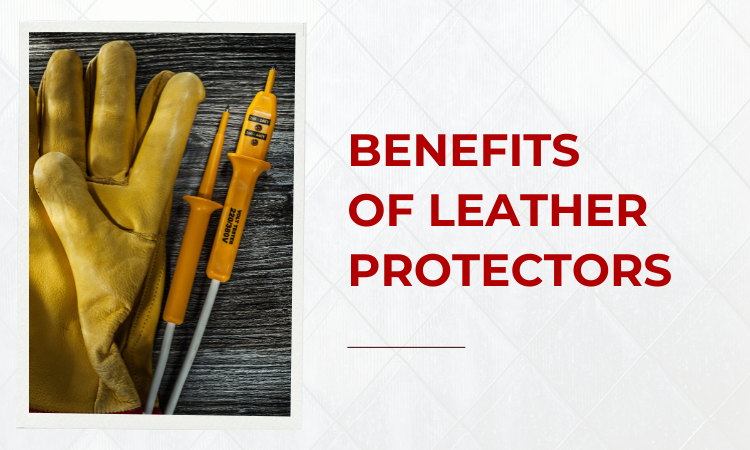
Beyond Electrical: Discuss additional benefits of leather protectors like abrasion and puncture resistance:
When leather protectors are worn with insulating rubber gloves, they do their main job of keeping you safe from electrical dangers, but they also have many other uses. These versatile partners have a surprising number of extra benefits that make work safer and more comfortable.
Puncture Protection: When you work as an electrician, you’ll probably have to deal with sharp things like wires, tubing, and metal edges. There is less chance of getting holes or cuts in leather covers, which is good for both your health and the safety of your electrical equipment. It’s especially important to do this in places where the wire is visible or when working with sharp objects.
Durability Against Wear and Tear: Working with electricity can be rough on your hands. Abrasions and calluses can be caused by tools, equipment, or even just holding something all the time. Leather protectors protect your hands from these common dangers at work by making a strong barrier. This not only eases the pain, but it also helps keep the skin from getting infections that could happen from being rubbed raw.
Superior Grip: High-quality leather guards usually have great grip. This can be especially helpful in sticky or wet places where keeping a firm grip on tools is important. Leather covers can help keep you from slipping and dropping things on the job by giving you a better grip.
Longer Glove Life: Leather covers support your insulating rubber gloves and take most of the wear and tear that would otherwise damage them. Protecting your rubber gloves from cuts, scrapes, and holes, leather covers make them last a lot longer, saving you money on replacements more often. Power Couple Maintenance: Tips for inspecting, cleaning, and storing your leather protectors and rubber gloves:
Your leather guards and insulating rubber gloves need to be taken care of and maintained so that they work at their best. Here’s how to keep your electricity safety pair in great shape:
It’s important to check: Check both your leather covers and your rubber gloves often for damage. Check the tires for any cuts, tears, punctures, abrasions, or changes in shape. For leather covers, look for signs of too much wear, dry rot, or the growth of mildew. Remember that even small damage can make your safety gear less useful.
Keep it clean: To keep their shape, both leather and rubber need to be cleaned properly. Use a wet cloth and mild soap to clean your rubber gloves after each use. Let them dry completely in the air before putting them away. A leather conditioner made for work gloves can be used to clean leather protection. In addition to getting rid of dirt and dust, this keeps the leather soft and stops it from cracking.
Storage is important: For your electrical safety gear to last longer, it’s important to store it properly. Keep your leather protection and rubber gloves somewhere cool, dry, and dark. Stay away from strong sunlight and very high or low temperatures, as these can damage both. Do not fold or wrinkle your rubber gloves. Instead, store them so that the tips of the fingers face up. Protectors made of leather should be hung up or put flat to keep their shape.
Do what the rules say: Always check the cleaning and storing instructions that come with your insulating rubber gloves and leather protectors to make sure you’re following the right steps. Also, make sure you follow any safety rules at work that say how to care for and maintain electrical safety tools.
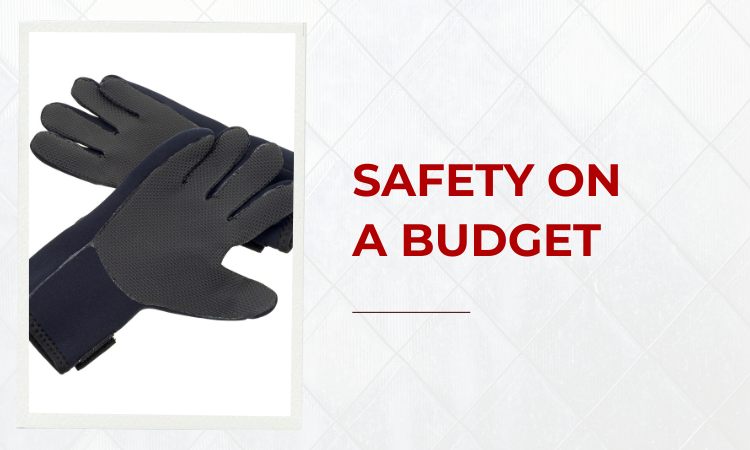
Safety on a Budget: Cost-effective ways to extend the life of your insulating rubber gloves with leather protectors:
It can be expensive to buy (electrical safety gear), especially insulated rubber gloves. Fear not, electricity workers who are watching their pennies! With your trusty leather protection, here are some cheap ways to make your insulating rubber gloves last longer:
Spend your money on good leather protectors: Even though it might be tempting to get the cheapest leather protection, keep in mind that “you get what you pay for.” Protective leathers made from strong materials will protect better and last longer, saving you money on buying new ones more often.
Learn how to be a maintenance master: As we’ve already talked about, the best way to make your electrical safety gear last as long as possible is to check, clean, and store it properly. If you carefully follow these steps, you can keep your rubber gloves in good shape for longer, which will save you money on replacements.
Fix things instead of buying new ones: Even if your leather covers have small holes or tears, that doesn’t mean you can’t use them. If the damage isn’t too bad, you might be able to fix it yourself with a leather patch kit. This might be a cheap way to make your leather covers last longer.
Double up on glove liners: Wear cotton or synthetic glove liners under your rubber gloves to keep sweat from building up and cut down on how often you have to clean them. This not only keeps your gloves dry, but it also keeps the rubber from breaking down too quickly from being wet.
How to Store Like a Professional: It’s best to store your gloves and protectors in a cool, dry, and dark place to keep them from getting damaged by sunshine, extreme temperatures, or moisture. This easy step can make your electrical safety gear last a lot longer.
Common Pitfalls: Debunking myths and addressing common mistakes when using leather protectors and rubber gloves:
Electrical workers who are very careful about safety can still have misconceptions or make mistakes without meaning to. Here, we’ll bust some myths and talk about some common mistakes people make when they use leather protection and rubber gloves:
Myth: Leather protectors mean gloves don’t need to be inspected: Leather covers add an extra layer of defense, but they don’t make you unbeatable. Check your rubber gloves and leather covers often for any signs of damage. Remember that even a small hole or tear can make your electricity safety less safe.
Mistake: One Size Fits All: Like shoes, leather protection, and rubber gloves should fit close but not too tight. Rubber gloves that don’t fit right can bunch up and lose their insulating power, and leather guards that are too loose won’t protect against cuts and scrapes.
Myth: Leather safety gear is only for electrical work: Leather covers are useful for more than just electrical work because they keep your skin from getting punctures and scrapes. This includes dealing with rough surfaces, handling sharp objects, or being in places where metal edges could be dangerous.
Mistake: Not taking Dexterity needs into account: The best leather protector balances security with dexterity. If your job requires you to handle tools carefully, you might need to choose leather that is lighter and more flexible. On the other hand, thicker leather is better for protecting your hands when doing heavy electrical work.
Myth: Leather doesn’t need maintenance: Leather covers need to be taken care of properly to keep working well. Use a leather conditioner to clean them often to keep them from cracking and dry rot. To keep them from losing their shape, store them the right way as well.
Leather vs. Alternatives: Weighing the pros and cons of leather protectors compared to other options for rubber glove protection:
Protecting insulating rubber gloves has always been done with leather covers. Luckily, as materials science has improved, new choices have come up. Comparison of the pros and cons of leather to these other materials:
Leather:
Pros:
Durability: High-quality leather is very resistant to wear and tear and holes, so your rubber gloves will last longer overall.
Dexterity: Leather is a good combination of safety and flexibility, so it’s easier to hand tools than some other materials.
Permeability: Leather naturally permeable, which keeps sweat from building up and makes long-term wear more comfortable.
Cons:
Cost: There are cheaper options besides leather protection.
Maintenance: Cleaning and conditioning leather on a daily basis is necessary to keep it working well.
Ethical Concerns: Some people may doubt the morality of using animal products.
Potential Alternatives:
Synthetic Materials: Newer materials like Kevlar® or ballistic nylon are puncture-resistant like leather, but they are often less expensive. They may, however, be less airy and less flexible.
Rubberized Gauntlets: These combined choices come in one piece, so you don’t have to wear separate protectors. They’re usually less expensive, but they might not breathe as well and might not come in as many sizes.
Q&A with an Expert: Interview an electrician or safety professional about leather protectors and insulating rubber gloves:
An electrical safety expert named Sarah Jones talks about how important leather covers are for keeping rubber gloves warm.
Why are leather covers so important when using rubber gloves that keep your hands warm?
Sarah: Leather protectors are an important part of a two-pronged method to keeping electrical items safe. Insulating rubber gloves protect you from electric current, and leather guards add another layer of protection against mechanical dangers. They keep your gloves from getting cut, wearing away, or punctured, which could make them less conductive and put you at risk of electrical hazards.
Do people have any false ideas about leather protectors?
Sarah: Of course! A common misunderstanding is that leather guards mean that gloves don’t need to be properly inspected. It is very important to check your gloves and protection for damage on a regular basis. Every tear, no matter how small, can affect your safety.
What factors should someone consider when picking the best leather protectors?
Sarah: Think about what kind of electricity work you do. Although thicker leather is safer, it might make it harder to move your fingers. Pick protectors that are made to work with the voltage level of your gloves. Also, know that it’s important that it fits snugly but comfortably.
Any last words of advice for people who work with electricity?
Sarah: Yes, definitely. To stay safe around electricity, wear insulating rubber gloves and leather protection. Take extra care of them! For them to last as long as possible and work as well as possible, they need to be inspected, cleaned, and stored correctly. Do not forget that safety is always a given.
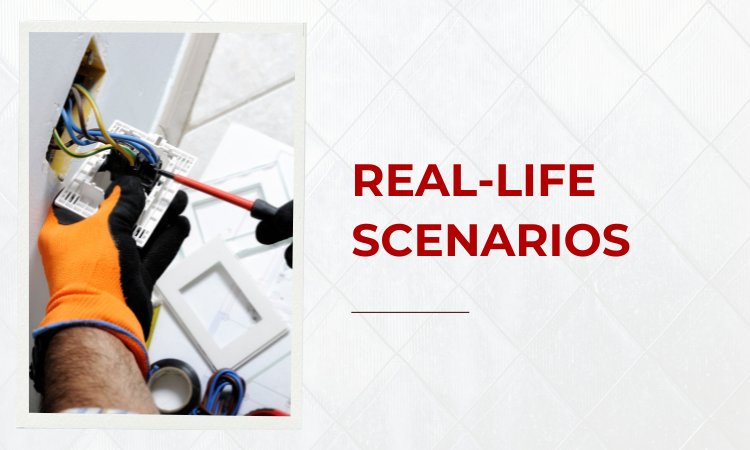
Real-Life Scenarios: Showcase situations where the perfect pairing of leather protectors and rubber gloves saves the day:
Wearing insulating rubber gloves and leather protection together isn’t just a thought experiment. This perfect match stopped a couple of real-life disasters:
Scenario 1: A Tense Moment on the Assembly Line
A busy production line gives John, an electrician, the job of fixing a control panel that isn’t working right. Puts on his trusted Class 0 insulating rubber gloves carefully, and then his well-kept leather guards. During his study, his hand touches a sharp metal conduit that is hidden inside the panel. Although John might have gotten a cut or been exposed to live electrical parts, the leather protection takes most of the impact. While luckily not damaged, the insulating rubber gloves will continue to protect him from possible electrical dangers. John finishes the repair safely and says that his gloves and protectors protected him from a minor accident turning into a major injury.
Scenario 2: Working together to achieve a goal while staying safe
An experienced electrician team, Sarah and Michael, are asked to replace a high-voltage transformer. For safety reasons, Sarah carefully checks both her insulating rubber gloves and leather protection before she starts the job. Michael loses control of a wrench while removing something, and it careens toward Sarah’s hand. A possibly crippling injury is avoided because of the thick leather protector on her hand. The protective rubber gloves, luckily not damaged, let Sarah safely finish the job with her teammate. Teamwork and being aware of your surroundings are just as important as wearing the right safety gear when you’re in a high-risk electrical setting.
Wearing the right insulating rubber gloves and leather protection can make all the difference in these two situations. Working together, these electrical safety must-haves make a strong barrier that lets workers focus on their work without worrying.
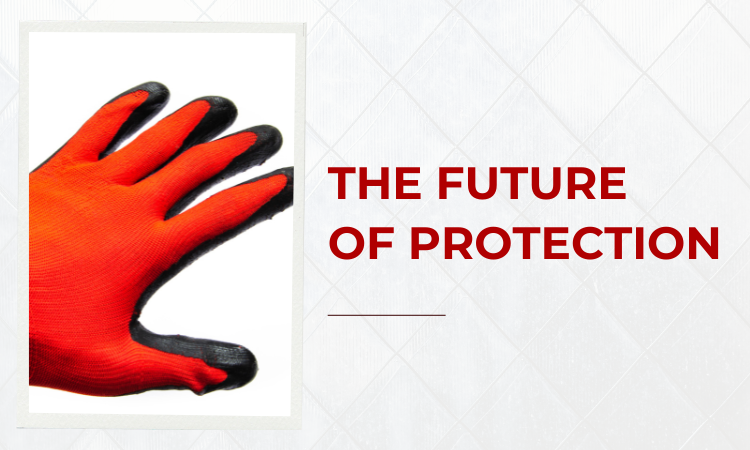
The Future of Protection: Exploring advancements in leather protector technology for enhanced safety in electrical work:
The simple leather protector is one example of how electricity safety is always changing. For protection that goes even further than standard leather, researchers and manufacturers are looking into new materials and technologies. Let’s look at some fantastic new developments in leather protection technology:
Cut-resistant Fibers: Novel synthetic materials, such as Kevlar® aramid fibers, are being added to leather protectors to make them more resistant to cuts and punctures without affecting comfort or flexibility. These hybrid guards provide both the natural breathability of leather and the better cut protection of synthetic fibers.
Fire-Retardant Treatments: Leather covers that have been treated with chemicals that keep fires from spreading are being made. An extra layer of protection against thermal injuries could be very helpful for electrical work that could involve arc flash dangers.
Smart Materials: In the future, leather covers could have sensors built into them that can find holes or cuts in the rubber gloves underneath. These “smart” protectors could send real-time alerts to workers, letting them know about possible safety breaches and causing regular glove replacements.
Biomimetic Design: Scientists need ideas from nature. Utilizing biomimetic methods could involve copying the structure of animal scales or even the ability of some organisms to fix themselves. More lightweight, more bendable, and maybe even self-repairing leather protectors could be made with these improvements.
Conclusion:
You’re investing in a strong relationship when you use both insulating rubber gloves and leather protectors for electrical safety. Don’t forget that proper care and inspection of this perfect pair are essential for keeping the best security. Remember the power of the perfect pair the next time you do electrical work: insulating rubber gloves and leather protection. This will help you stay safe on the job.
